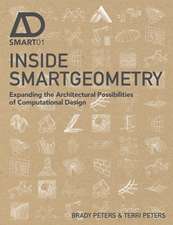Beyond Anitkabir: The Funerary Architecture of Atatürk: The Construction and Maintenance of National Memory
Autor Christopher S. Wilsonen Limba Engleză Hardback – 27 aug 2013
Preț: 848.96 lei
Preț vechi: 1141.16 lei
-26% Nou
Puncte Express: 1273
Preț estimativ în valută:
162.44€ • 170.06$ • 134.42£
162.44€ • 170.06$ • 134.42£
Carte tipărită la comandă
Livrare economică 05-19 aprilie
Preluare comenzi: 021 569.72.76
Specificații
ISBN-13: 9781409429777
ISBN-10: 1409429776
Pagini: 162
Dimensiuni: 174 x 246 mm
Greutate: 0.52 kg
Ediția:New.
Editura: Taylor & Francis
Colecția Routledge
Locul publicării:Oxford, United Kingdom
ISBN-10: 1409429776
Pagini: 162
Dimensiuni: 174 x 246 mm
Greutate: 0.52 kg
Ediția:New.
Editura: Taylor & Francis
Colecția Routledge
Locul publicării:Oxford, United Kingdom
Notă biografică
Christopher S. Wilson teaches architecture and design history at the Ringling College of Art and Design in Sarasota, Florida, USA.
Recenzii
'The book narrates and demonstrates very eloquently the interesting (hi)story of the transportation and location of the remains of the founder of Turkey, starting from the Dolmabahçe Palace in Istanbul to Anıtkabır in Ankara. Wilson offers a highly interesting account of the Turkish national identity process providing new insights, fresh interpretation, and original information, at least for the non-Turkish readers, through a not-so-widely studied field, that of Turkish architecture...' Changing Turkey in a Changing World 'The visual content of the book is remarkable. It includes not only historical photographs of the different funeral processions, mourning ceremonies and related buildings from 1938 to 1953, but also original drawings of the competition entries. Wilson also provides four selfmade maps that illustrate the historical paths of the funeral processions in Istanbul and Ankara. With his discussion of the actual routes versus possible alternatives, he is able to add a new and fascinating spatial dimension to the analysis of the processions as rituals'. H-Soz-u-Kult (H-Net) 'Wilson.’s book is a timely addition to an interesting subfield of turkish studies, the study of memory in republican turkey'. Turkish Review
Cuprins
Introduction; Chapter 1 Funerary Architecture, Representation and Atatürk; Chapter 2 Identity, Memory, Nationalism and Architecture; Chapter 3 Dolmabahçe Palace; Chapter 4 The Ankara Catafalque; Chapter 5 Ethnographic Museum Temporary Tomb; Chapter 6 An?tkabir Mausoleum; Chapter 7 Maintaining National Memory; Chapter 101 Conclusion;
Descriere
There have been five different settings that have contained the dead body of Atatürk, organizer of the Turkish War of Independence (1919-1923) and first president of the Republic of Turkey. Narrating the story of these different architectural constructions, this book also describes and interprets the movement of Atatürk’s body through the cities of Istanbul and Ankara and also the nation of Turkey to reach these destinations. It examines how each one of these locations - accidental, designed, temporary, permanent - has contributed in its own way to the construction of a Turkish national memory about Atatürk.









